
This is despite the fact plenty of research shows we’d be less stressed, have more energy, and feel more relaxed if we spent more time out in nature.
Nature is a powerful antidote to the stresses and pressures of modern life.
With this in mind, I’ve been experimenting with creative ways to get my daily dose of nature. One strategy I’ve been testing out is working outside.
I recently listened to a podcast interview with Kim Stanley Robinson (author of The Ministry for the Future). Kim has been writing books outdoors for the last 15 years. In fact, he believes this is what saved his writing career.

On the podcast Wild with Sarah Wilson, he mentioned how this interesting habit came about. He said:
“I was feeling tired of writing . . . burnt out. And then I moved outdoors to a café table that’s in a courtyard that’s fenced in by the side of the house. There’s a Japanese maple shading it but it wasn’t quite enough shade for the laptop screen. So I slung a tarp from the fence and tree branches.”
He later added:
“I realised I wasn’t sick of writing. I was sick of being indoors all day.”
For Kim, writing outdoors has been a joy and an exhilarating experience. “The little birds are my office mates”, he said.
After listening to this interview, I thought “What have I been doing all this time?”
I knew I needed to head outdoors and set up a second workspace.
I didn’t waste any time. I went on Gumtree and found a cute retro vintage table with drawers. It fit perfectly in the space I had available on my back verandah.
Mosquitos are a real problem in my neighbourhood. Like a phone pinging constantly, they are a source of distraction and irritation.
To combat this problem, I purchased a secondhand mosquito net for $5 to hang over my workspace. Upon inspection, the net had one little hole but this was easily fixed with a needle and some thread. With a couple of clothes pegs, I am able to close the opening of the net so mosquitos can’t get in.

I can’t tell you how satisfying it is every time I am working away and I see a mosquito buzzing on the outside of the net. I think “Victory!”.
With my outdoor workspace, I need to be able to easily access the right tools and stationery once I enter the netted space. I don’t want to have to get up and unpeg the mosquito net every few minutes and risk a pesky mosquito entering my space.
• Pads of paper
• Pencils and gel pens
• Coloured pens
• Post-it notes
• Electronic timers (to track my work sessions and breaks)
• Water bottle and glass
• A couple of solid rocks (to act as paper weights so my papers don’t fly away when it’s windy)
• Ergonomic laptop stand (to prevent neck strain), a keyboard, and mouse
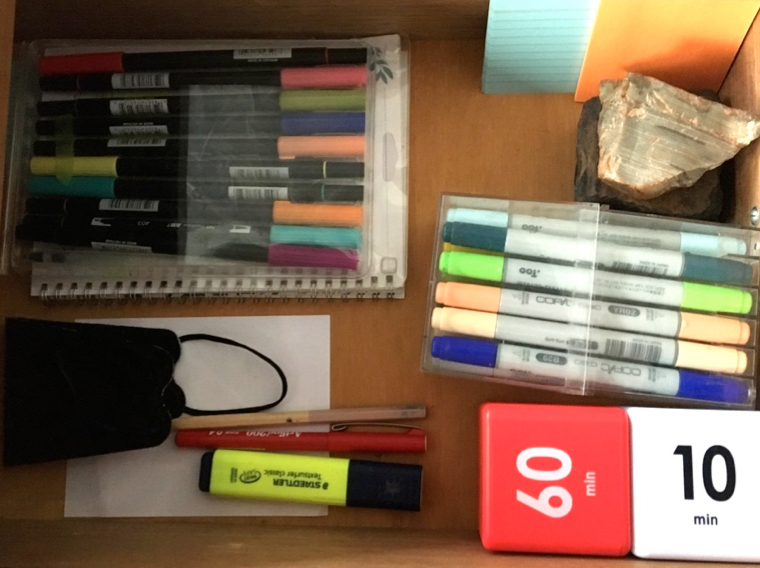
Having these items within arms reach means I can get into a flow state quickly and stay in flow.
When I’m working outdoors, I have a simple rule: my mobile phone is off limits (I leave it inside the house). It’s amazing how when my work gets difficult, instead of checking my phone to get a quick shot of dopamine, I’ll notice a little bird or a wasp flying nearby. This gives me a mini mental break without getting completely derailed and losing sight of what I need to be doing.
This is probably the biggest downside associated with working outdoors. You have no control over the elements.
If you live in a warm climate like I do, you may want to set up a fan. Kim Stanley Robinson who lives in California installed one of those misting devices that pubs and cafes use in their outdoor areas to keep customers cool. He says this keeps him cool during Summer.
I live in Western Australia where in Summer it’s easy to feel like you’re being slow roasted outside. When it gets too hot, it’s hard to think and near impossible to learn.
Similarly, when it’s too cold, I can’t focus and learn for the life of me!

But in Winter, you can layer up. You can put on a warm jumper, beanie, some uggboots, and/or use a blanket. Kim Stanley Robinson says in the colder months he puts on his mountaineering gear to write outdoors. He sometimes even uses an electric heating pad for his feet.
Bottom line is this: do what you need to do to be comfortable in your outdoor workspace.
I understand Kim and I are both in privileged positions. Not everyone has a backyard, verandah, and/or the space to set up an office outside.
If you don’t have a backyard, here’s what I would recommend: create a mobile office. This is a backpack that contains everything you need to do your work.
Then, take your backpack to a local park (ideally one that has plenty of shade) and set yourself up at a picnic table.

Alternatively, simply having a picture or painting of a natural environment in your study space and looking at it from time to time can be beneficial. This study found staring at a picture of a flowering meadow green roof for just 40 seconds was associated with better sustained attention.
Indoor plants are a fabulous investment, too. Having indoor plants in your space has been found to boost creativity (you can check out the research here).
In a world where we are becoming increasingly disconnected from the natural environment, working outdoors can be a great way to get a good dose of nature.
Since setting up my outdoor office space, I’ve noticed so many wonderful little creatures in my garden that I normally wouldn’t see (mainly birds and bandicoots). I also feel calmer and more energised at the end of the day. I can focus better, too.
I strongly encourage you to invite a little more nature into your life, whether it be by setting up a desk outside or adding some indoors plant to your study space.
Share This:
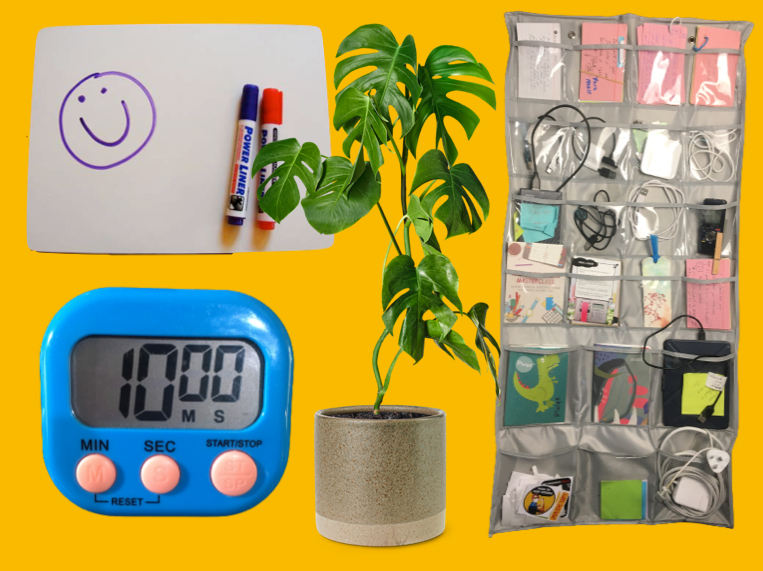
You need to start by doing something different.
As Paul Taylor says in his book Death by Comfort:
“Nothing changes if nothing changes”.
Over the years, I’ve read a lot of books and articles on the psychology of behaviour change. One thing is clear from the research literature: it’s much easier to change your behaviour by changing your context rather than changing your thoughts and attitudes.
In other words, the simplest ways you can create change is to set up your environment to make it easier to do the things you want to do and harder to do the things you don’t want to do.
In this blog, I explore different ways you can tweak your study space to make it easier for you to study and harder for you to get distracted.
Timers are super handy tools, especially when you’re lacking motivation.
Whenever I’m avoiding a task or not feeling in the mood to do something, I’ll say to myself “Let’s just do 10 minutes”. I start the timer and off I go. Usually by the 10 minute mark, the motivation has kicked in and I want to keep going.
Using a timer is a simple and easy way to push through mental blockages. It can also create a sense of time awareness and prompt you to take regular breaks.
Charging cables, flashcards, mini notebooks, and USB sticks: these are just a few examples of random little items that we need. But where do you put this stuff?
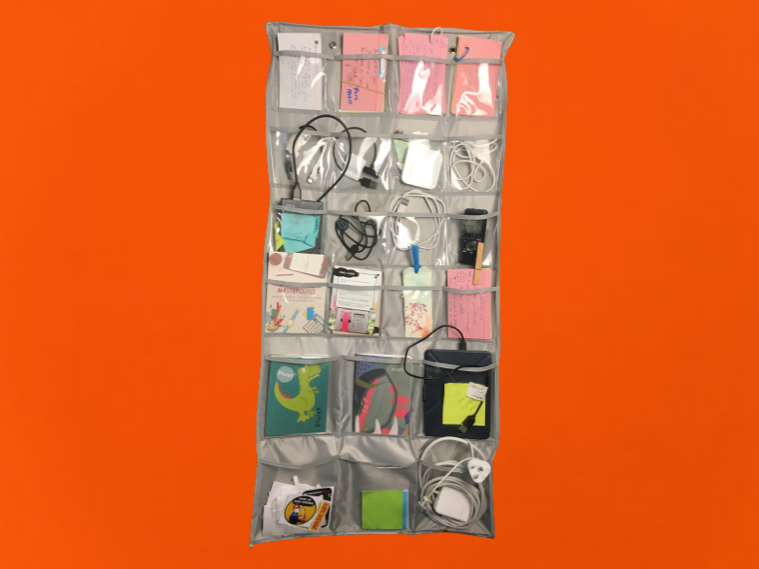
A vertical wall hanger with clear pockets (typically used for storing jewellery) works well for storing and separating these random but important items.
Feeling stressed in your study space? Perhaps it’s clutter that’s getting you down.
Take a moment to scan your environment. If your eyes land on a pile of objects and you find yourself feeling stressed and/or overwhelmed, take those items and dump them into a box. Now take that box and put it in another room. You can sort through these items later on.
Staying hydrated is super important when it comes to learning. Research shows even mild dehydration can impact students’ ability to learn and remember information.
But if there’s no water in sight, you’re probably not going to be taking regular sips.
I have a reusable drink bottle but some people find having to unscrew a lid a barrier to taking sips. If that’s you, have a jug of water and a glass nearby. You might also enjoy using a reusable straw (stainless steel or glass).
Being hungry sucks and it doesn’t serve you when it comes to learning. Your brain needs energy to think and learn. Where does it get that energy from? Food.
Make a start on stocking your fridge and pantry with plenty of healthy snack foods. My favourite snack foods include blueberries, strawberries, and pretty much any fruit, nuts, veggie sticks, and soy yoghurt.

While you’re at it, get rid of any tempting ultra-processed junk food. This junk will mess with your ability to think and learn.
If I can’t see my work and items I need, they don’t exist. This is why I always store important items in clear storage containers and write things I need to do on bright yellow paper and colourful post-it notes. If it’s out of sight, it’s out of mind.
One trick I use is leaving myself post-it note reminders of what I need to do next after I complete each work session. These notes give my brain a clear direction of what it needs to focus on next, which means I’m less likely to get derailed.
When there’s a lot of things happening and multiple projects on the go, it’s easy to lose track of what you need to do.
Using open storage systems (e.g., open bookshelves or pigeonhole units) can be another effective way to keep track of all your projects. I use a pigeon hole to organise all my projects. This keeps them in sight and in mind.
I remember an academic coach once saying to me, “If you start the day by checking your email, you’ll be 10% less productive”.
She was spot on.
When you start the day with devices, this puts you in reactive mode. You feel less in control.
Here’s a little psychological trick I use to get myself into proactive mode: I lock my phone in a kSafe for the first 30 minutes of the day. My phone is already placed in the safe before I go to bed, which means all I need to do is spin the dial and press the button when I get up in the morning.
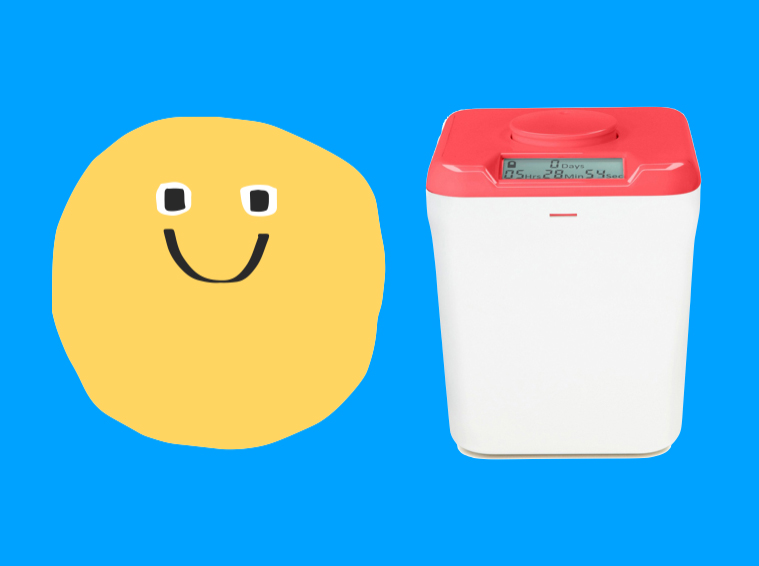
This simple action signals to my brain that I’m in control of my day (and not big tech).
Of course, you don’t need to buy a kSafe to stay off your phone. Placing your phone in a drawer (out of sight) or in another room will also do the job.
You use them to mow the lawn, but a pair of earmuffs work wonders for blocking out noise while you’re trying to study.
They also have signalling power. When you put them on, it signals to others (and your brain) that you are in work/study mode. When you take them off, you are free to play, rest, and do whatever you like.
Having a yearly planner stuck up on your wall can help to create a sense of time awareness. You look up at the planner and you can see in one glance how much time you have between now and when a project is due or when an exam is scheduled.
Indoor plants have been found to boost creativity. But certain types of indoor plants, such as English ivy and the Money plant, also purify the air.
You don’t need to create a jungle to experience the benefits of indoor plants. One or two plants in nice colourful pots is all you need to freshen up your space.
Have you considered working on your feet and incorporating some movement into your study sessions?
Active workstations, such as sit-stand desks, cycle desks, and treadmill desks, help to break the sedentary work cycle, get the blood pumping more efficiently up to your brain, and give you a cognitive boost.
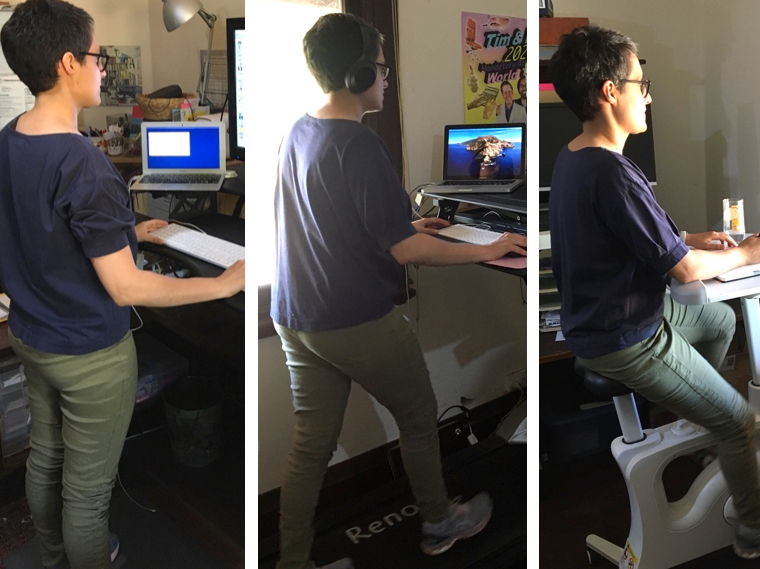
If you prefer to stay seated while you study, that’s no problem. Just make sure you get up and move every 25-30 minutes. Take an exercise snack.
An exercise snack is a quick 30-60 second bout of exercise. I have a few small pieces of exercise equipment strategically placed in my study space to mix up my exercise snacks.
Depending on what you like to do and the space you have available, here are a few ideas:
• Kettlebell
• Dumbbells
• Resistance bands
• Skipping rope
• Gymstick
• Hula hoop
If you feel good in your study space, you’re more likely to want to spend time there. One of the simplest ways to spruce up your space is with colourful and inspiring pictures.
Up on my walls is a colourful world map, a poster from a memorable comedy show I attended with my brother, and a framed piece of children’s artwork.
What do these things all have in common?
They make me feel good. And when I feel good, it’s easier to think, focus, and learn.
After looking at a screen for 25 minutes or so, get down on a yoga mat and do some gentle stretches. If the mat is already rolled out on the floor, it’s a lot easier to get down and stretch your body.
This is a designated spot for all your school items (e.g., books, files, reference materials, unit outlines, practice exam papers, and notes). Need to find something to complete a project or study for a test? There’s only one place it can be: in the magic spot.
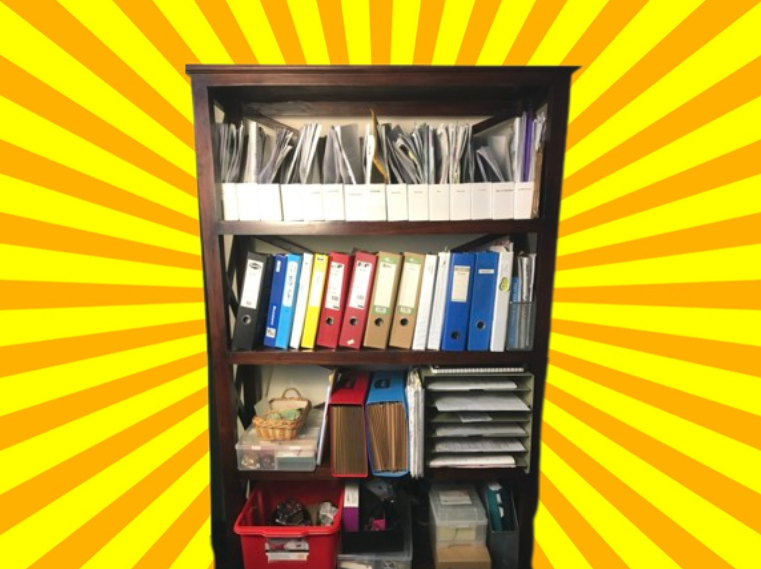
When your work gets difficult, it’s too easy to escape to social media, YouTube, and Netflix. To stop yourself mindlessly checking these apps, activate an Internet blocker app such as Cold Turkey or Freedom.
It’s not just Big Tech companies that can distract us. Often we distract ourselves with all kinds of random thoughts.
How do we handle these thoughts?
You can capture them in a notepad that’s strategically placed within arms’ reach. When a random thought strikes, write it down. You don’t have to act on every thought straight away.
Think of this notepad as your ‘Thought Inbox’. Once you’ve written the thought down, it’s not going anywhere. You can return your focus to the task at hand and deal with these thoughts at a later time.
Ads online are like advertising in public spaces: they constitute visual clutter. They also stir up consumptive desires and frequently throw you off course.
You can eliminate a lot of online ads by installing an adblocker plugin. I use Adblock Plus.
When I’m feeling nervous about putting ideas down on paper, I go to my whiteboard. It’s less scary to jot down ideas on a whiteboard.
If it doesn’t work out, that’s okay. You can easily wipe it all away.
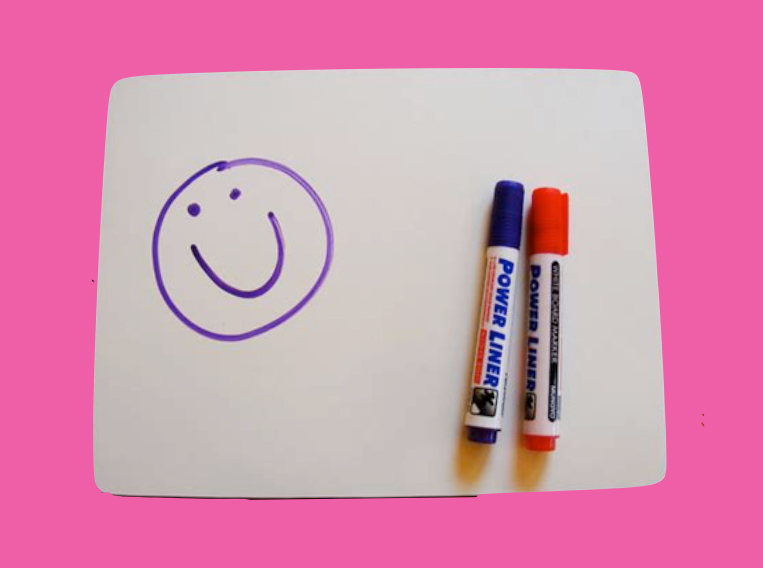
Each of these strategies may not seem like much on their own. But when combined, they can have a big impact on your ability to focus, learn, and get things done.
Like anything in life, the key is not to get bogged down by a sense of overwhelm. You don’t need to make all of these changes all at once. Just get started with one or two.
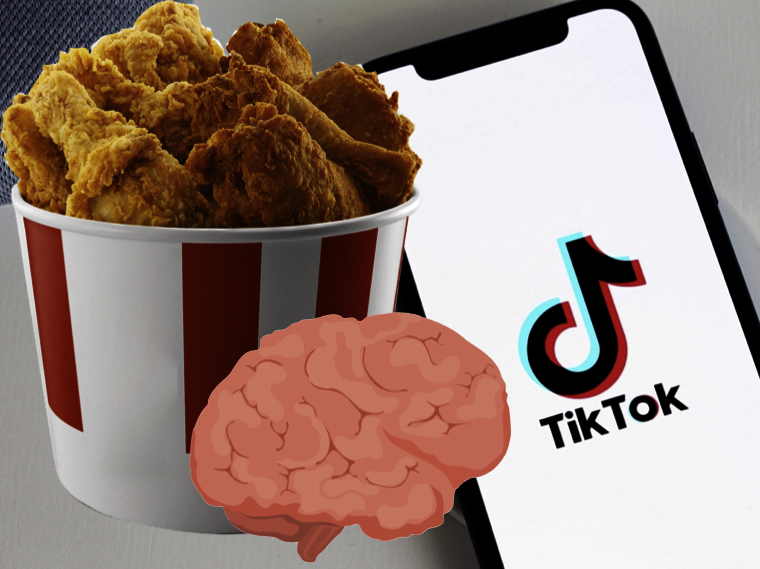
Our environment primes us to seek out instant gratification. We are easily swayed by what is happening in the present, particularly the powerful forces of social media.
Don’t want to feel the pain of doing your work?
Don’t feel like sitting with uncomfortable thoughts and feelings?
No problem!
You can go on TikTok for instant relief.
But the problem with TikTok (and all forms of social media) is that it’s like KFC for the human brain.
It delivers short-term rewards that create long-term costs.
Think of it like this . . .
Those 15 second attention grabbing videos are like deep fried little treats.

And TikTok is an all you can eat buffet where the food has been engineered to give you a massive hit of dopamine. This dopamine-rich food environment is within arms reach and it never runs out. You can eat as much as you want, whenever you want.
The team of TikTok chefs and food engineers are constantly adding more and more greasy food creations to the buffet. With each day that passes, the food options become more novel and extreme (deep fried spam and cheese covered in panko crumbs, anyone?).
But here’s the really creepy part . . .
Because you frequent the buffet multiple times per day, the staff get to know exactly what you like. They know your name, where you live, what you like and don’t like, and the places you like to visit. This means they serve you food that hits the sweet spot every time.
In other words, this machine knows you better than you know yourself.
It’s highly addictive.
It’s easily accessible.
And it’s making you sick.
As Matthew Crawford states in his book The World Beyond Your Head: On Becoming an Individual in an Age of Distraction:
“The media have become masters at packaging stimuli in ways that our brains find irresistible, just as food engineers have become expert in creating “hyperpalatable” foods by manipulating levels of sugar, fat, and salt. Distractibility might be regarded as the mental equivalent of obesity.”
Here’s the thing . . .
You may have noticed that the more you consume from the TikTok buffet, the less you enjoy it. But even though you don’t enjoy it, you can’t stop going back for more. You keep piling your plate with more sickening fried food.
The problem is your brain hasn’t evolved to handle this massive amount of useless content hitting you at such fast rates (with no stop mechanisms in place).
Without good strategies in place to protect yourself, you’re at serious risk.
Your ability to focus and think deeply about who you are and what you want from life will be diminished.
In addition, when you’re constantly bombarded with highly curated, beautiful images of people who have more and better stuff than you, your perception of reality becomes distorted.
As Dr Anna Lembke states:
“We’re now comparing ourselves not just to our classmates, neighbors, and co-workers, but to the whole world, making it all too easy to convince ourselves that we should have done more. Or gotten more, or just lived differently.”

Social media influencers have a lot to answer for. These people set fake, wildly unrealistic standards which no one can live by. They can’t even live by the ridiculous standards they set and promote.
It’s these impossible standards that are making so many people feel anxious, depressed and insecure.
In fact, studies show young people are getting more plastic surgery due to the pressure from social media.
In short, TikTok is making our brains, thinking, and expectations go haywire.
If your TikTok use has got out of control, never fear. The human brain is super adaptable. You can reset things, so you feel less anxious and more in control.
How do you do this?
One way is to engage in a Dopamine Fast.
A Dopamine Fast involves giving your brain a break from constant overstimulation by avoiding all technology (e.g., phone, video games, and social media) for a period of time. Start with just 24 hours.
You might be thinking, “Well, that sounds boring! Why would I want to do that?”
But as Dr Anna Lembke states in her book Dopamine Nation:
“Boredom is not just boring, it can also be terrifying. It forces us to come face-to-face with bigger questions or meaning and purpose. But boredom is also an opportunity for discovery and invention. It creates the space for new thoughts to form, without which we’re endlessly reacting to stimuli around us, rather than allowing ourselves to be within our lived experience.”

Challenge yourself to take a break from the TikTok buffet and be alone with your thoughts and feelings. Notice what comes up for you as you don’t go on your phone (Boredom? Anxiety? FOMO? Freedom?)
It’s a good idea to write down or draw out what you experience on your Dopamine Fast.
After the Dopamine Fast is over, before you quickly run to the TikTok buffet, ask yourself this:
Am I fully in control of my brain?
Or has TikTok hijacked my attention?
If you do choose to go back on TikTok, you need to put limits in place. Easier said than done, right?
It’s your brain up against a big machine of industrialised persuasion.
This is why the Chinese government heavily regulates TikTok. If you’re a teenager in China, here’s how TikTok works:
• You can only use it for 40 minutes a day
• It has opening and closing hours (it opens at 6am and closes at 10pm)
Until our governments start to seriously regulate big tech companies, here’s what I recommend you do:
Because let’s be clear: TikTok does not have your best interests at heart.

How do you do it without getting derailed by a tsunami of ads, click-bait, notifications and hyperlinks?
Your brain is up against many carefully crafted apps and video games that are designed to steal your attention.
This article is about how you can read online without ending up places you never intended to go.
I’m going to share strategies and guiding principles that help me to stay focused when I’m reading on a screen.
Let’s face it, we all need help with this. The temptation of fun apps and websites are only a few clicks away! But you only have so much mental energy. You need to know how to harness it and direct it towards the things that really matter.
I won’t deny it. I like being able to hold books and articles in my hands. This is why I buy a lot of books and get the Guardian weekly delivered to my door.
Being able to easily scribble down questions and draw pictures in the margins helps me to learn and understand the material.
If the information is really important and/or complex, I highly recommend printing it out. But for all other written works (e.g., blogs, emails, movies or book reviews), try implementing the following ideas and strategies.
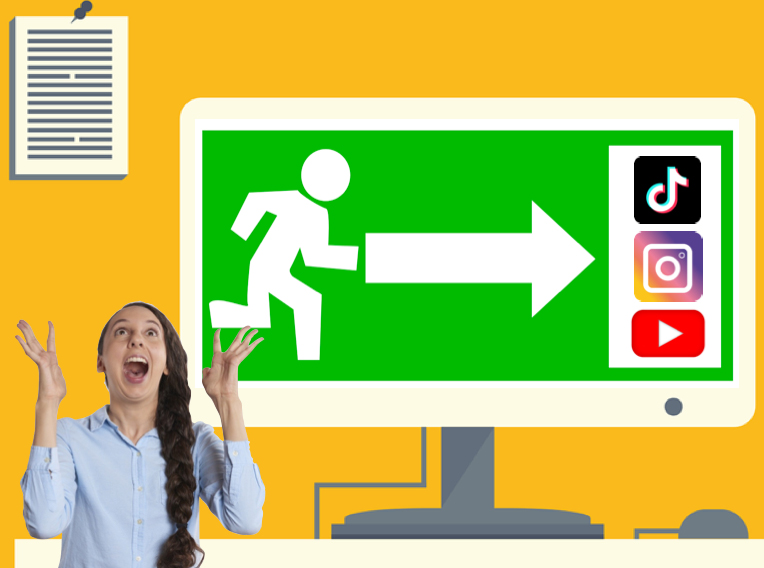
The human brain loves comfort. It loves the familiar.
But reading can be challenging and downright uncomfortable for the brain.
If you’re reading an article on a subject that is completely new to you and/or conflicts with your pre-existing beliefs, your brain is likely to have some kind of adverse reaction. It’s going to be like “What is this?! I don’t like this!”.
You’ll feel the urge to escape from this mental discomfort. Therein lies the problem with reading something online . . .
You have lots of easy escape routes (e.g., social media, YouTube, and Netflix). These escape routes give your brain instant relief and gratification. But they also take you further away from your goals and what you need to do (hello, life regrets!).
Don’t give your brain any room to run. Block the escape routes.
Before you sit down to read, set yourself up for a successful online reading experience. For example, here’s what I do:
• I put my phone on silent and place it in another room
• I activate an Internet blocker app called Freedom
• I clear away any clutter on my desk (I dump it in a box)
• I switch off any distracting music that’s playing (generally anything that contains lyrics)
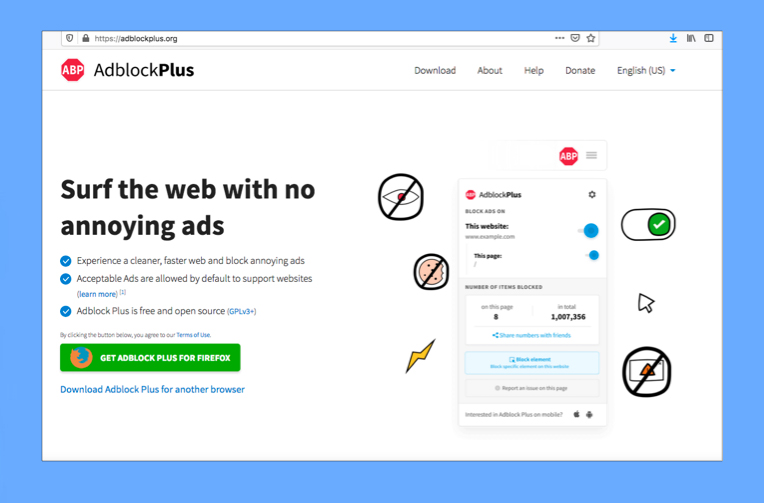
We all know the online world is not the real world. But there’s one irritating feature both worlds have in common: advertising.
The nasty thing about online ads is they are way more targeted (you can thank surveillance capitalism for that!).
Like all advertising, I see online ads as a form of mental pollution. They don’t add anything to your online reading experience, except noise, stress and visual clutter.
Online ads can easily derail your attempts to learn and grow. Plus, they can rapidly deplete your bank balance!
This is why I recommend installing an adblocker plugin to remove ads from webpages, social media and search engines.
Check out AdblockPlus. It’s free and highly effective.
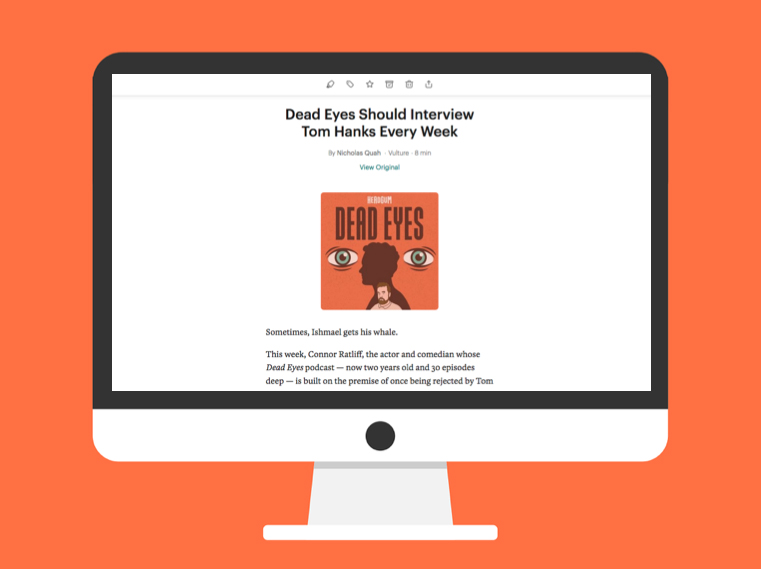
When reading an article, you want to be able to focus on just the content. Most of the time, you don’t need to see side bars, pop-up boxes and other people’s angry comments. This is online clutter that overloads your working memory and depletes your brainpower.
The good news is you can eliminate this clutter by using a free app called Pocket.
Pocket allows you to save articles in your web browser. You can then open the article up without all the other clutter that appeared on the original webpage.
When you open up an article in Pocket, you’ll see a lot of white space around the text. Your brain will say “Thanks!”. Using Pocket makes for a much nicer and easier reading experience.
Take out a notepad and pen and make notes as you read. Not only is it super handy to have something to refer back to but it will help you to understand the information more easily.
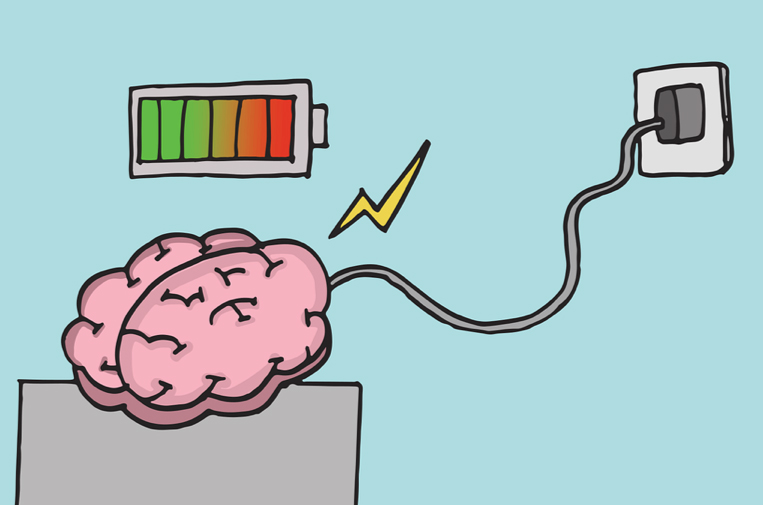
Reading may seem like a passive and ‘easy’ activity. But don’t be fooled. Reading requires serious brainpower.
What can help to supercharge your brain to get through all those articles and chapter readings?
I find two things help a lot:
1) Healthy snacks (ideally, within arms reach)
2) Power naps
Before I get stuck into a serious reading session (anything more than 30 minutes), I will sometimes make myself a little platter with veggie sticks, a dip and crackers.
It’s like the act of preparing the platter is helping me to mentally prepare for the task ahead. I’m also combining something tasty with something that can feel hard (i.e., reading). This seems to make the task of reading a complex article a little more pleasant for my brain.
As for the power naps, I typically use these to recharge my brain after reading academic papers.
It’s hard to absorb ideas and learn skills when you’re feeling exhausted. This is why I take power naps and prioritise sleep. It’s not a smart idea to try learning anything new late at night. You’re not going to remember very much.
Hit the sack and commit to waking up early and doing a little reading first thing in the morning.
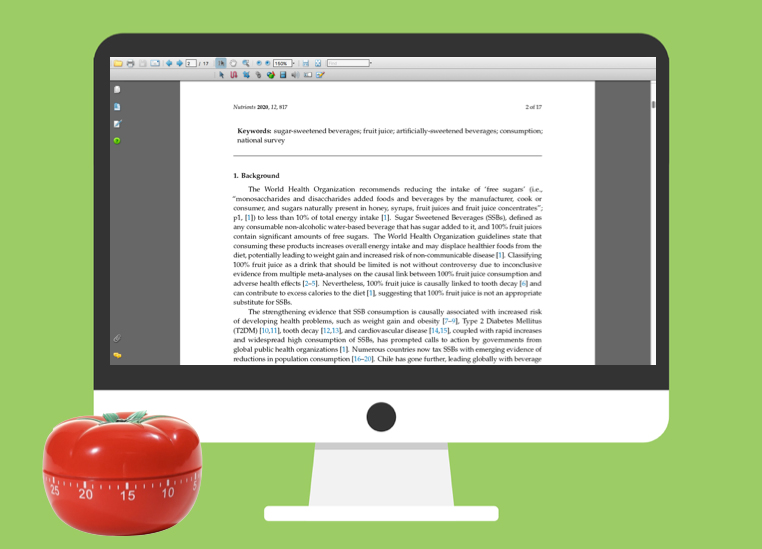
Decide on how long you’re going to read for. Then set a timer and go! Give the articles your full attention for this period of time. I find 25 minutes is a good amount of time for focused reading.
After sitting and reading for 25 minutes, I like to get up, stretch and look out a window to give my eyes a rest.
If you want to be able to remember what you read on a screen, you need to be able to focus your mind. You can’t be jumping around all over the Internet.
But this is not how most of us read online. We skim and scan pages, click and scroll. Like a poker machine, the Internet has trained us to be on the look out for anything that it going to light up the reward pathways of our brain.
You need to appreciate that reading a chapter isn’t going to instantly light up your brain in the same way that social media is designed to do. This is why it’s so important to set yourself up so you can read deeply and get to the end of an article. And if you made it this far, well done!
Dr Jane Genovese delivers interactive sessions on learning to learn, combating procrastination, exam preparation, how to focus in the age of distraction, habit formation and much, much more!
Get FREE study and life strategies by signing up to our newsletter:
© 2024 Learning Fundamentals